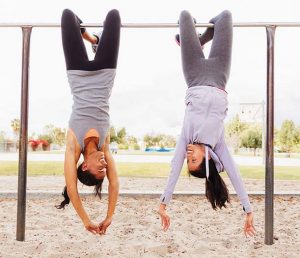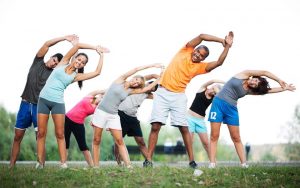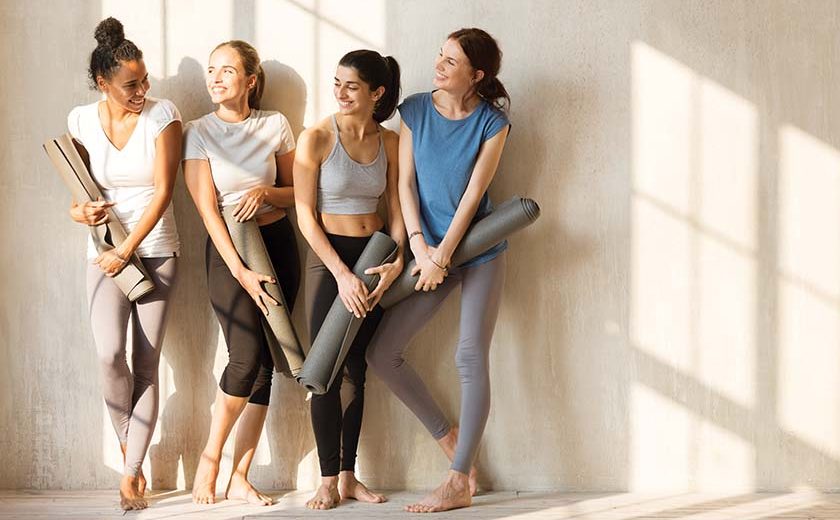It’s still exercise, so what’s the difference?
Exercise by itself is already known to have many benefits for mental health, including improving sleep and mood, boosting sex drive, and increasing energy levels and mental alertness. So, whichever way you’re exercising right now, kudos to you.
In the final group, students didn’t do any exercise other than walking or biking to get where they needed to go.The researchers measured students’ perceived stress levels and quality of life — mental, physical, and emotional — at the start of the study and every four weeks. All of the students started the study at about the same level for these mental health measures.
After 12 weeks, group exercisers saw improvements in all three types of quality of life, as well as a drop in their stress levels. In comparison, solo exercisers only improved on mental quality of life — even though they exercised about an hour more each week than the group exercisers.
For the control group, neither stress level nor quality of life changed that much by the end of the study. The study has some limitations, including its small size and inclusion of only medical students.
Students were also allowed to choose their own exercise group, so there may be physical or personality differences between group and solo exercisers that could affect the results.
While these results should be viewed with caution, the research hints at the power of working out together. The study was published in The Journal of the American Osteopathic Association.
In one study, researchers looked at whether group exercise could help medical students, a high-stress group that could probably use regular workouts. For this research, medical students split into three exercise categories.
One category did a 30-minute core strengthening and functional fitness training program at least once a week, as a group, along with extra exercise if they wanted.
Another category was made up of solo exercisers, who worked out on their own or with up to two partners at least twice a week.

Working out together
Other research has focused on the impact of group exercise — specifically working out in sync — on social bonding, pain tolerance, and athletic performance. In one study six years ago in the International Journal of Sport and Exercise Psychology, researchers recruited people to work out for 45 minutes on rowing machines.
After the session, people who had rowed in groups — and synchronized their movements — had a higher pain tolerance compared to solo rowers. Pain tolerance increased whether people were rowing with teammates or with strangers.
Researchers think the increased tolerance to pain may stem from a greater release of endorphins — the “feel good” hormones — due to people getting in sync with one another while exercising.
This kind of coordinated movement is known as behavioral synchrony. It can occur during other group activities as well, such as play, religious rituals, and dance. It may also boost your performance, especially if you’re already close to other people in the group.
In an even older study, researchers found that rugby players who coordinated their movements while warming up performed better on a follow-up endurance test. These athletes were already part of a close-knit rugby team. Researchers think the synchronized movements during the warm-up reinforced the existing social bonds between them.
The researchers write that this “may have changed athlete’s perception of the pain and discomfort associated with fatigue. This allowed participants to push harder and perform better.”
So when you’re surrounded by other people working out too, you are able to tap into the power of synchrony.

This is in most cases, but not all
Paul Estabrooks, PhD, a behavioral health professor at the University of Nebraska Medical Center, found that “exercise context” shapes how much effect exercise has on quality of life, social interactions, physical benefits, and people sticking with their workouts.
In one 13-year old review in Sport and Exercise Psychology Review, Estabrooks and his colleagues looked at 44 previous studies that compared the benefits from different exercise contexts.
The contexts included the following: Home workouts, either alone or with contact from a health professional; standard exercise classes; and “true group” classes, where special techniques were used to increase social bonding among people in the class. True group classes provided the most benefits. Standard exercise classes — without the added bonding — were similar to at-home exercise with help.


